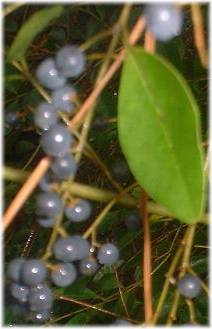|
Gardens Ablaze |
||
|
|
Privet
|
|
|
Detailed Shrub & Hedge Plant Profiles Site Map
Home
|
As a trimmed hedge, Privet works quite well and is an economical choice. All Privets grow quickly, and within a few years after planting bare-root plants, will fill in and provide a 3-4 foot tall border. Eventually they can reach 8-12 feet tall, so this is one plant that you can simply keep trimmed to the height that is right for your landscape. They take well to trimming, bushing out more after every shearing, but after they are established, they only need a haircut twice a year or so, unless you are going for a very formal look, in which case you can trim whenever needed.
Privet is not particular about soil conditions, but always appreciates a loamy, rich soil, especially early on. Once established it is a draught-tolerant plant that provides cover for a number of beneficial insects and birds, and as such can be a good choice for a habitat type of situation. It is considered a mildly toxic plant, causing mild to severe stomach pain when ingested, so bear this in mind if you have small children around that will be attracted to the berries. Privet can be propagated by seed after removing the hard seed coat, and almost 100 percent of privet seed is viable, which is why it has been so successful in escaping into the wild. It can also be propagated by stem cuttings in fall or winter. It is a vigorous plant, and when cut to the ground will usually regenerate from root and stem suckers.
Custom Search
|
|
|
Gardens Ablaze |
||
 Privet
is one shrub that can be a godsend or a nightmare, largely depending on where
you live. In the Southeast in particular, it has become known as a noxious
weed because of it's ability to spread, germinate, and grow quickly, choking out
native species of plants everywhere it lands. As far as making a
decent hedge or screen, however, it can be a useful and nice-looking addition to
the home landscape.
Privet
is one shrub that can be a godsend or a nightmare, largely depending on where
you live. In the Southeast in particular, it has become known as a noxious
weed because of it's ability to spread, germinate, and grow quickly, choking out
native species of plants everywhere it lands. As far as making a
decent hedge or screen, however, it can be a useful and nice-looking addition to
the home landscape.  All Privets
have white blooms in the spring or early summer, followed by black, rather
non-descript berries in the fall. Most are deciduous shrubs that lose
their leaves in the winter, but there are a couple of members of this family
that are evergreen. The berries are the biggest problem in areas where
this plant is a nuisance, because they are eaten by birds, and the seeds are
dropped sometimes long distances away. Keeping a Privet hedge trimmed so
that it won't flower or seed is one way for the homeowner to keep this process
in check. In areas where they are not such a nuisance, the flowers on
large cascading plants can really be quite pretty in the spring, and the flowers
are appreciated by bees and butterflies.
All Privets
have white blooms in the spring or early summer, followed by black, rather
non-descript berries in the fall. Most are deciduous shrubs that lose
their leaves in the winter, but there are a couple of members of this family
that are evergreen. The berries are the biggest problem in areas where
this plant is a nuisance, because they are eaten by birds, and the seeds are
dropped sometimes long distances away. Keeping a Privet hedge trimmed so
that it won't flower or seed is one way for the homeowner to keep this process
in check. In areas where they are not such a nuisance, the flowers on
large cascading plants can really be quite pretty in the spring, and the flowers
are appreciated by bees and butterflies.